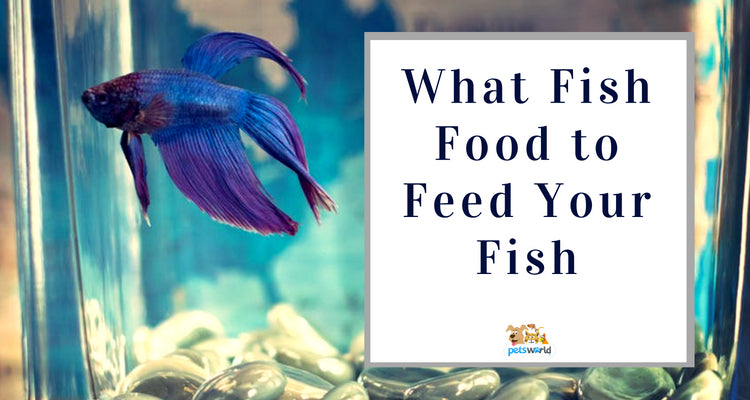Proper and nutritious food supply is quite vital for healthy growth of your pet fish. Without an adequate and qualitative food supply, growth rate of your aquarium fish would fall below the normal levels, and the overall balance of your aquarium can be put in jeopardy. For this reason, we dedicate this article to make you aware about the quality and balanced food that should be fed to your aquarium fish.
The food provided to your aquarium fish must be nutritionally balanced, safe, and appropriate. Here is the daily nutritional value for a standard growing fish:
| Nutrient | Recommended % Daily Value |
| Fat | ~ 8% (carnivores);~ 3% (herbivores) |
| Fiber | ~ 4% (carnivores); ~ 5-10% (herbivores) |
| Protein | ~ 45% (carnivores); ~ 15-30% (herbivores) |
| Carbohydrates | ~ 30-40% |
| Minerals | calcium and phosphorus (mandatory); iron, iodine, magnesium, sodium, potassium, zinc |
| Vitamins | A, D3, E, K, B1, B2, B3, B5, B6, B12, C, H, M, and Inositol |
Here are the different types of foods available for your fish which suffice to the above nutritional value:
1) Flake and Pellet foods
These fish foods are available in an array of formulations designed for the specific types of fish, such as saltwater fish, community fish, herbivores, carnivores and so on. These foods can form a tremendous staple diet for most species. The bad side of these appetizing and nutritious foods is that once exposed to air, their nutritional value quickly depletes, thus becoming functionally worthless and stale. Therefore, they should be either consumed/discarded within three months of opening the package.
2) Frozen fish foods
Online fish food stores sell a broad array of frozen fish food items which range from zoo-plankton to the whole fish. In addition to less expensive than live foods, the frozen foods are also readily accepted by the aquarium fish. It makes these foods quite valuable for the feeding predatory fish or fussy. All types of frozen fish foods are less likely to carry pathogens as compared to the live fish food, and many manufacturers irradiate the food to ensure that it is completely safe to consume.
These foods are also unprocessed, which makes them nutritionally excellent and also these foods tend to be high in fiber. It is always good idea to alternate between the foods throughout the week, like chopped mussel one day, mysids the next and so on. Blended frozen fish food customized according to the different fish communities such as salt water fish, cichlid fish and so on should be .
3) Freeze-dried foods
This type of food contains valuable fiber as well as well balanced nutrients. This fish food can either be used as the staple fish food item or as a good supplement to the flake and pellet foods. Further, the freeze drying also kills any potential pathogens, which makes such foods quite safe to consume, and most of the fish seem to find them highly palatable too. The key drawback of this food is that it is expensive. Compared to the frozen fish foods, freeze-dried fish food costs a lot for what you actually get.
4) Feeder fish
Considering feeder fish as fish nourishment has grown up to be controversial. Many experienced aquarists have gone on to reject feeder fish as unnecessary and unsafe, regardless of any ethical dimension. Cheap feeder fish are reared in the squalid conditions and very likely to carry parasites and diseases, and should never be used. The most commonly sold feeder fish are goldfish and minnows, and these are too rich in fat and thiaminase to be of value. Over the period, the fat causes damage to the internal organs of fish and the thiaminase breaks down the essential vitamin B-1.
If you must use the feeder fish, the best approach is to raise your own. It is recommended to use livebearers because these are nutritionally well-balanced as well as easy to rear. Further, they should be maintained in good and healthy environment and be provided with an optimum quality diet.
How to choose the right feed for the Fish?
In order to begin your fish feeding program, you should speak to your local fish food store about the types of feed they provide. Most aquariums have variety of different sizes of fish, therefore, it is recommended to purchase pellet food with 1/8" size globule. It is small enough for most of the young fish to consume, but large enough to satiate your adult fish.
You might have difficulty acquiring a 1/8" pellet because it is not always considered a stock item. If it is the case with you, you can choose a 1/4" or 3/16" pellet. Further, you should always purchase the floating pellets because floating pellets enable you to monitor the exact amount of food that is being consumed. It is also quite difficult to exactly determine how much the sinking fish food is being wasted. The wasted fish food will reap havoc on the water quality and over a period of time could contribute to the algae problems.

